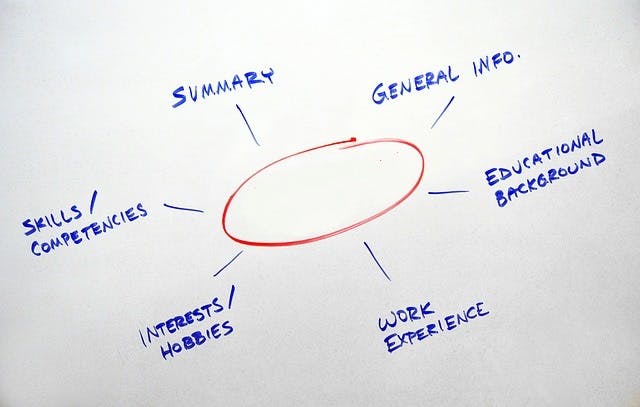
Your resume gives you roughly 3-6 seconds to convince the person reviewing it that you’re a potential match for their job. That’s why you need a strong summary of your employment value at the top of the page. So whether you call it an overview of qualifications, qualifications summary, key qualifications statement, or something similar, your goal is to make the absolute best use of that valuable lead-in space.
I asked Brad Rogers, LibGig Director of Recruiting and the reviewer of thousands of resumes, what he felt summary statements needed to accomplish for job-seekers:
“The summary statement is the door-opener for job applicants. Think of it as a very brief executive summary for a detailed report, and in this case, the report just happens to be the rest of your resume. It should tell me at a glance why it’s worth investing my time to read the rest of your resume. And for librarians and recent MLIS grads applying for jobs outside of traditional library settings, it must connect the dots from your credentials to the position.”
Based on his advice, these are the three things your summary statement must do:
#1. Showcase what makes you valuable for that job
You may have many strengths and qualifications for multiple positions. However, being mindful of your 6-second window, you want to condense your value proposition down to “just enough” information rather than including “just in case” information.
Just enough for what? For your resume reviewer to quickly identify you as a potential fit, and be willing to spend additional time reading through the rest of your professional details.
You want to make that decision as easy as possible for your reader; if they have to hunt for key information, you’ve just given them a reason to reject your application and move on to the others. And yes, this means that you may need to tweak your summary statement for each resume you send, or at the very least for certain categories of jobs.

#2. Provide specific and relevant information
Generally, you want to note what you did, for whom, for how long, and what results can be meaningfully quantified. For example, for an adult services program manager job, following are some before and after summary statements.
Resume summary statement rewrite ideas
BEFORE
Experienced public librarian with passion for working with library patrons.
AFTER
Impact-focused public librarian with 5+ years experience creating innovative adult programming for mid-sized urban library, resulting in 60% participation increase over 5-year period.
BEFORE
Experienced corporate librarian with knowledge of multiple research tools.
AFTER
Adaptive and comfortable with change, an experienced corporate librarian with 12+ years of increasing responsibility as business intelligence manager for Fortune 500 pharmaceutical company, with specialization in Gartner, Forrester, and similar research tools.
Your goal is to include details that further document your qualifications for a specific job – this concrete information will make your resume stand out and help a hiring manager immediately see how you could successfully “hit the ground running” for them.
#3. Align not only with the job but also with the employer
Aligning with the job entails identifying keywords used in the job description and requirements, and then including several of the most critical ones in your summary statement. Rather than using your own language to describe your expertise, you want to very specifically mirror the keywords used in the job description so that it’s easy for an automated resume screener to identify them and pass your resume through the system.
In addition, however, one of the best reasons to include relevant details in your summary is that it enables you to further clarify how your experience and expertise align with not only the job, but also the employer. Did you work in the same industry, or with a similar product/service, or the employer’s target demographic? By including these details as in “mid-sized urban library” or “Fortune 500 pharmaceutical company” you can immediately demonstrate an additional area of alignment for a hiring manager.
Template to align summary statement with position
Here’s a fill-in-the-blank template to help you get started:
How long: _______________________
Indicate your years of experience doing related work to immediately confirm you meet their years-of-experience job requirement.
Who you worked with: _______________________
Indicate a specific community, title, role or clientele you’ve supported.
In what type of setting: _______________________
Indicate the type of library or information center, organization, industry, etc.
The results: _______________________
Share positive outcomes, quantifiable if possible.
The above summary statement template may result in something like the following:
7 years of research experience supporting attorneys and business development teams in AmLaw 100 law firms, meeting all deadlines and contributing to new client revenue worth over $25 million annually.
By including these details when relevant to the job for which you’re applying, your summary statement points out that you’re not only great in a specific area of expertise, but you’ve also practiced that expertise in ways and settings that can deliver added value to your potential employer. It’s an approach that enables you to differentiate your application from others’, and may help you land an interview.

What if you’re new to the profession?
One of the challenges new LIS professionals often face is a lack of substantial professional experience to showcase in their summary statement. In that case, rather than showcasing relevant qualifications, you may want to highlight a combination of individual strengths and any at least somewhat related experiences or expertise, including volunteer and/or non-LIS experience.
Rather than having an opening statement titled “Summary of Qualifications,” you might instead have a “Key Strengths” statement that points out, for example, key character traits or strengths that you’ve demonstrated through various circumstances or accomplishments. Although they may not have been as an employee, they can still provide insights into your potential ability to contribute.
Consider the following activities and achievements:
- Any achievements during your graduate school experience that demonstrate a strength likely to be valuable in a professional setting?
- Have you been repeatedly praised by faculty for an outstanding attribute that indicates you’re likely to be a high-performing employee?
- Volunteer work that requires you to excel in leadership, collaboration, project management, or similarly valuable skills?
- Have you taken the initiative to create a program, lead a change, brainstorm and execute an innovative project?
These kinds of activities provide evidence of your potential to be a terrific employee, and would be strong elements to include in your Key Strengths statement.
Never lead with objectives
Finally, and once and for all, if you’re still including your career objectives on your resume, it’s time to let go. Replace it with a statement of qualifications.
A qualifications statement is all about the value you can contribute to a potential employer, i.e., what’s in it for them. An objectives statement, on the other hand, is about your wants, what you’d like an employer to do for you.
As Brad noted,
“Besides being a bad way to start off a relationship, an objectives statement wastes your reviewer’s time and wastes the most precious space on your resume. Use that valuable real estate to tell potential employers how and why you can be incredibly valuable to them, not how they can help you.”
It’s up to you to meet your career objectives by pursuing opportunities that will help you reach them!
